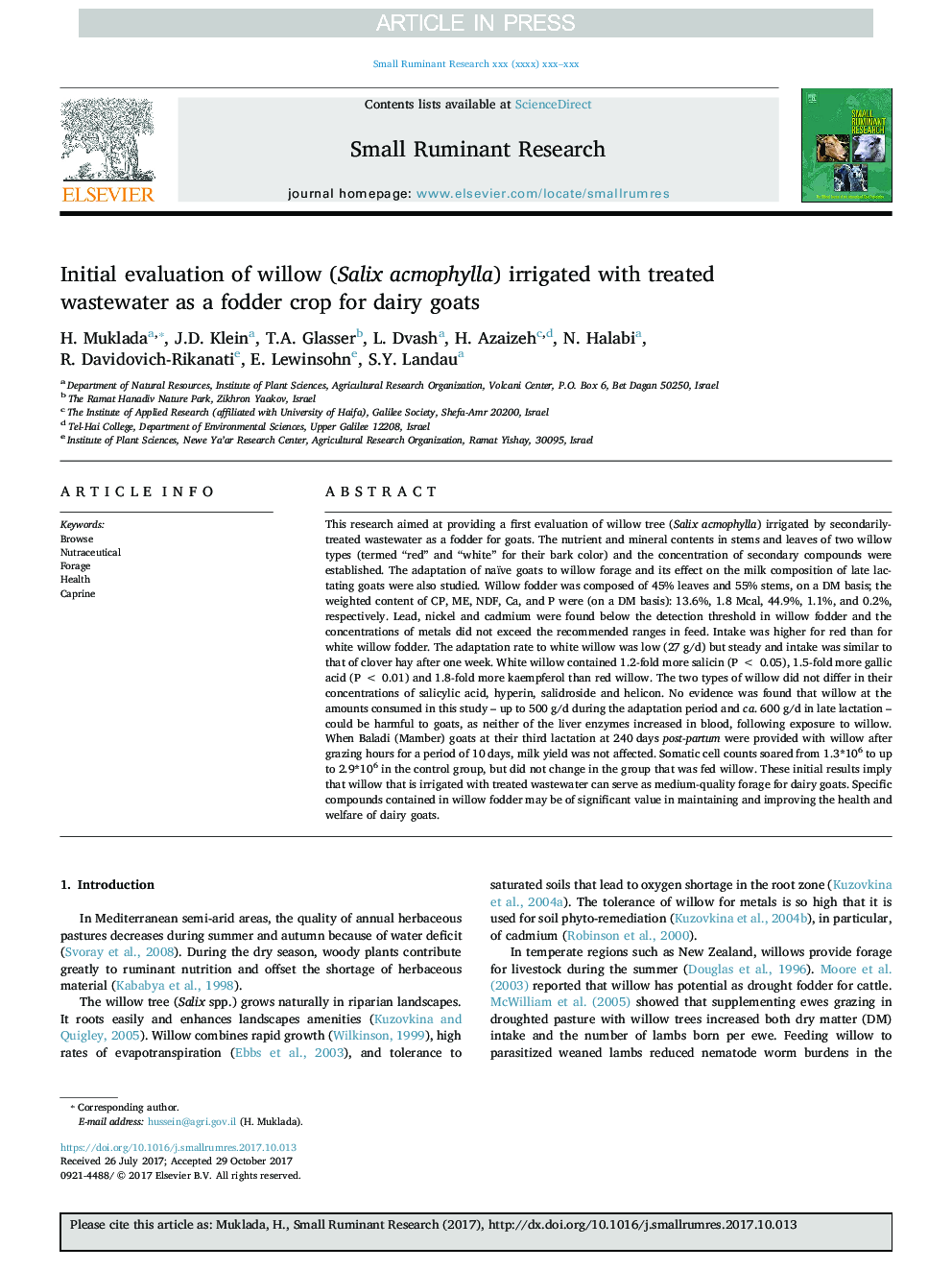| کد مقاله | کد نشریه | سال انتشار | مقاله انگلیسی | نسخه تمام متن |
|---|---|---|---|---|
| 8504199 | 1554329 | 2018 | 8 صفحه PDF | دانلود رایگان |
عنوان انگلیسی مقاله ISI
Initial evaluation of willow (Salix acmophylla) irrigated with treated wastewater as a fodder crop for dairy goats
دانلود مقاله + سفارش ترجمه
دانلود مقاله ISI انگلیسی
رایگان برای ایرانیان
موضوعات مرتبط
علوم زیستی و بیوفناوری
علوم کشاورزی و بیولوژیک
علوم دامی و جانورشناسی
پیش نمایش صفحه اول مقاله

چکیده انگلیسی
This research aimed at providing a first evaluation of willow tree (Salix acmophylla) irrigated by secondarily-treated wastewater as a fodder for goats. The nutrient and mineral contents in stems and leaves of two willow types (termed “red” and “white” for their bark color) and the concentration of secondary compounds were established. The adaptation of naïve goats to willow forage and its effect on the milk composition of late lactating goats were also studied. Willow fodder was composed of 45% leaves and 55% stems, on a DM basis; the weighted content of CP, ME, NDF, Ca, and P were (on a DM basis): 13.6%, 1.8 Mcal, 44.9%, 1.1%, and 0.2%, respectively. Lead, nickel and cadmium were found below the detection threshold in willow fodder and the concentrations of metals did not exceed the recommended ranges in feed. Intake was higher for red than for white willow fodder. The adaptation rate to white willow was low (27Â g/d) but steady and intake was similar to that of clover hay after one week. White willow contained 1.2-fold more salicin (PÂ <Â 0.05), 1.5-fold more gallic acid (PÂ <Â 0.01) and 1.8-fold more kaempferol than red willow. The two types of willow did not differ in their concentrations of salicylic acid, hyperin, salidroside and helicon. No evidence was found that willow at the amounts consumed in this study - up to 500Â g/d during the adaptation period and ca. 600Â g/d in late lactation - could be harmful to goats, as neither of the liver enzymes increased in blood, following exposure to willow. When Baladi (Mamber) goats at their third lactation at 240Â days post-partum were provided with willow after grazing hours for a period of 10Â days, milk yield was not affected. Somatic cell counts soared from 1.3*106 to up to 2.9*106 in the control group, but did not change in the group that was fed willow. These initial results imply that willow that is irrigated with treated wastewater can serve as medium-quality forage for dairy goats. Specific compounds contained in willow fodder may be of significant value in maintaining and improving the health and welfare of dairy goats.
ناشر
Database: Elsevier - ScienceDirect (ساینس دایرکت)
Journal: Small Ruminant Research - Volume 163, June 2018, Pages 76-83
Journal: Small Ruminant Research - Volume 163, June 2018, Pages 76-83
نویسندگان
H. Muklada, J.D. Klein, T.A. Glasser, L. Dvash, H. Azaizeh, N. Halabi, R. Davidovich-Rikanati, E. Lewinsohn, S.Y. Landau,